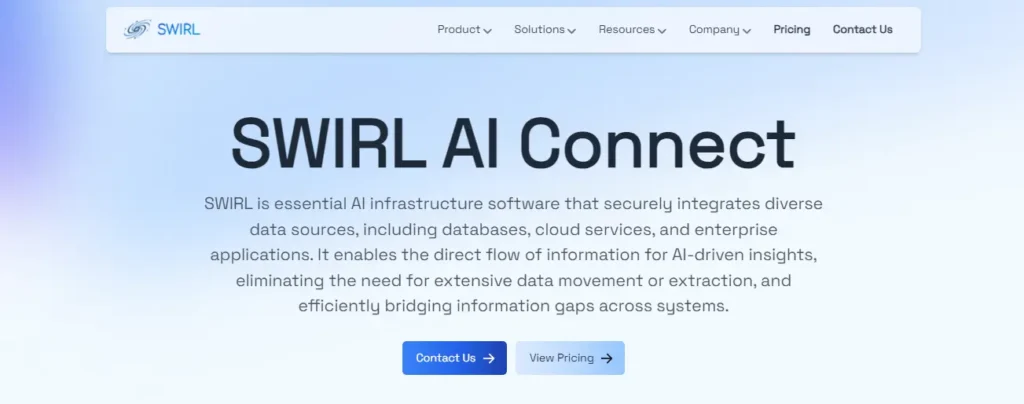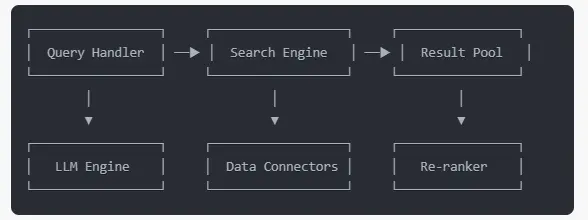In the rapidly evolving landscape of search technology, AI-powered search engines like Perplexity AI have emerged as game-changers. These systems go beyond traditional keyword matching to provide contextually relevant results and AI-generated summaries. This article explores how to build a similar system using SWIRL, an open-source framework that combines the power of large language models with flexible search capabilities.
Understanding AI-Powered Search
Traditional search engines like Google rely primarily on keyword matching and link analysis. Modern AI-powered search engines, however, leverage large language models (LLMs) to:
- Understand natural language queries
- Process and analyze search results
- Generate coherent summaries
- Provide contextual responses with citations
SWIRL: An Open-Source Alternative
SWIRL (Semantic Web Information Retrieval Layer) is an open-source framework that allows developers to build Perplexity-like search experiences. It combines traditional search capabilities with AI-powered features, making it an excellent foundation for building advanced search applications.

Key Features
- Natural Language Processing
- Multi-source search capabilities
- AI-powered summarization
- Result re-ranking
- Source citation
- Docker-based deployment
Technical Architecture
Core Components

Implementation Layers
- Query Processing Layer
- Natural language understanding
- Query parsing and optimization
- Context extraction
- Search Layer
- Multiple search provider support
- Parallel query execution
- Result aggregation
- AI Processing Layer
- Result summarization
- Content generation
- Source verification
- Presentation Layer
- Result formatting
- Citation management
- User interface
Setting Up Your Own Instance
Prerequisites
- Docker and Docker Compose
- OpenAI API key
- Basic understanding of containerization
Step-by-Step Implementation
1. Initial Setup
# Download the Docker configuration
curl https://raw.githubusercontent.com/swirlai/swirl-search/main/docker-compose.yaml -o docker-compose.yaml# Set environment variables
export MSAL_CB_PORT=8000
export MSAL_HOST=localhost
export OPENAI_API_KEY='your-OpenAI-API-key'
2. Launch the Container
# For MacOS/Linux
docker-compose pull && docker-compose up
# For Windows
(PowerShell) docker compose up
3. Configure Search Sources
- Access admin panel at http://localhost:8000
- Default credentials: admin/password
- Configure search providers and connectors
Extending Functionality
Adding Custom Data Sources
class CustomDataConnector:
def __init__(self, config):
self.config = config
async def search(self, query):
# Implement custom search logic
results = await self._fetch_results(query)
return self._process_results(results)
Implementing Custom Re-ranking
class CustomReRanker:
def __init__(self, model):
self.model = model
def rerank(self, results, query):
scores = self._calculate_relevance(results, query)
return sorted(results, key=lambda x: scores[x.id], reverse=True)
Advanced Features
1. Enhanced Result Processing
- Semantic similarity scoring
- Entity recognition
- Cross-reference verification
2. Custom Plugins
- Domain-specific processors
- Custom ranking algorithms
- Specialized data connectors
3. Performance Optimization
- Result caching
- Query optimization
- Resource management
Best Practices and Considerations
Security
- API Key Management
- Use environment variables
- Implement key rotation
- Monitor usage
- Access Control
- Implement role-based access
- Set up authentication
- Log access patterns
Performance
- Query Optimization
- Implement caching
- Use parallel processing
- Optimize resource usage
- Resource Management
- Monitor system resources
- Implement rate limiting
- Scale horizontally when needed
Deployment Considerations
Production Environment
- Infrastructure
- Load balancing
- High availability
- Monitoring and logging
- Scaling
- Container orchestration
- Resource allocation
- Database scaling
Maintenance
- Updates
- Regular security patches
- Feature updates
- Dependency management
- Monitoring
- Performance metrics
- Error tracking
- Usage analytics
Future Enhancements
- Advanced AI Features
- Multi-modal search
- Conversational interfaces
- Context awareness
- Integration Capabilities
- API expansion
- Third-party integrations
- Custom workflow support
Conclusion
Building a Perplexity-like search engine with SWIRL provides a powerful foundation for creating advanced search experiences. By combining traditional search capabilities with AI-powered features, organizations can create sophisticated search solutions tailored to their specific needs.
The open-source nature of SWIRL allows for extensive customization and enhancement, making it an excellent choice for organizations looking to build their own AI-powered search solutions. As the technology continues to evolve, the possibilities for extending and improving these systems will only grow.
Resources
Learn More: